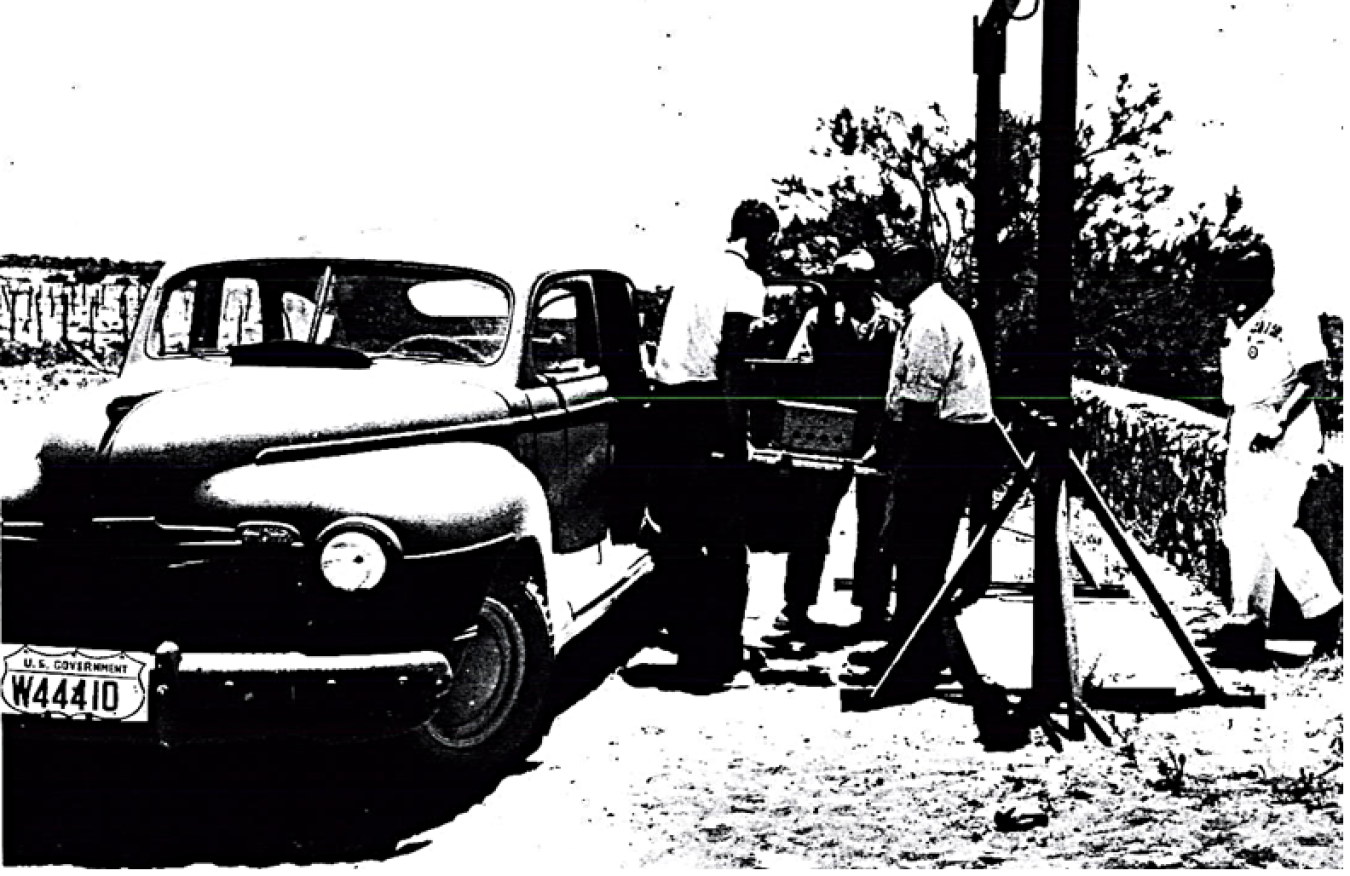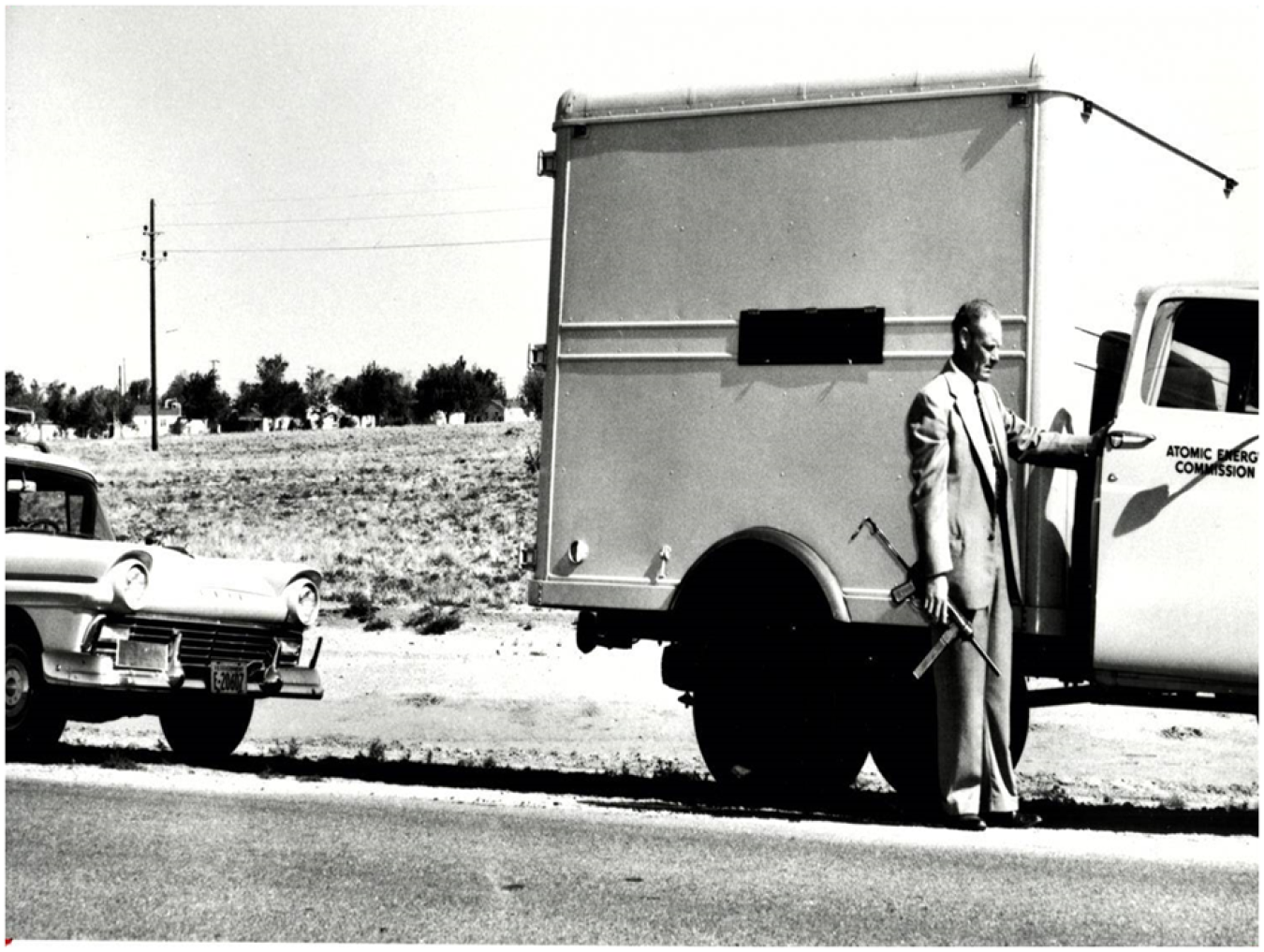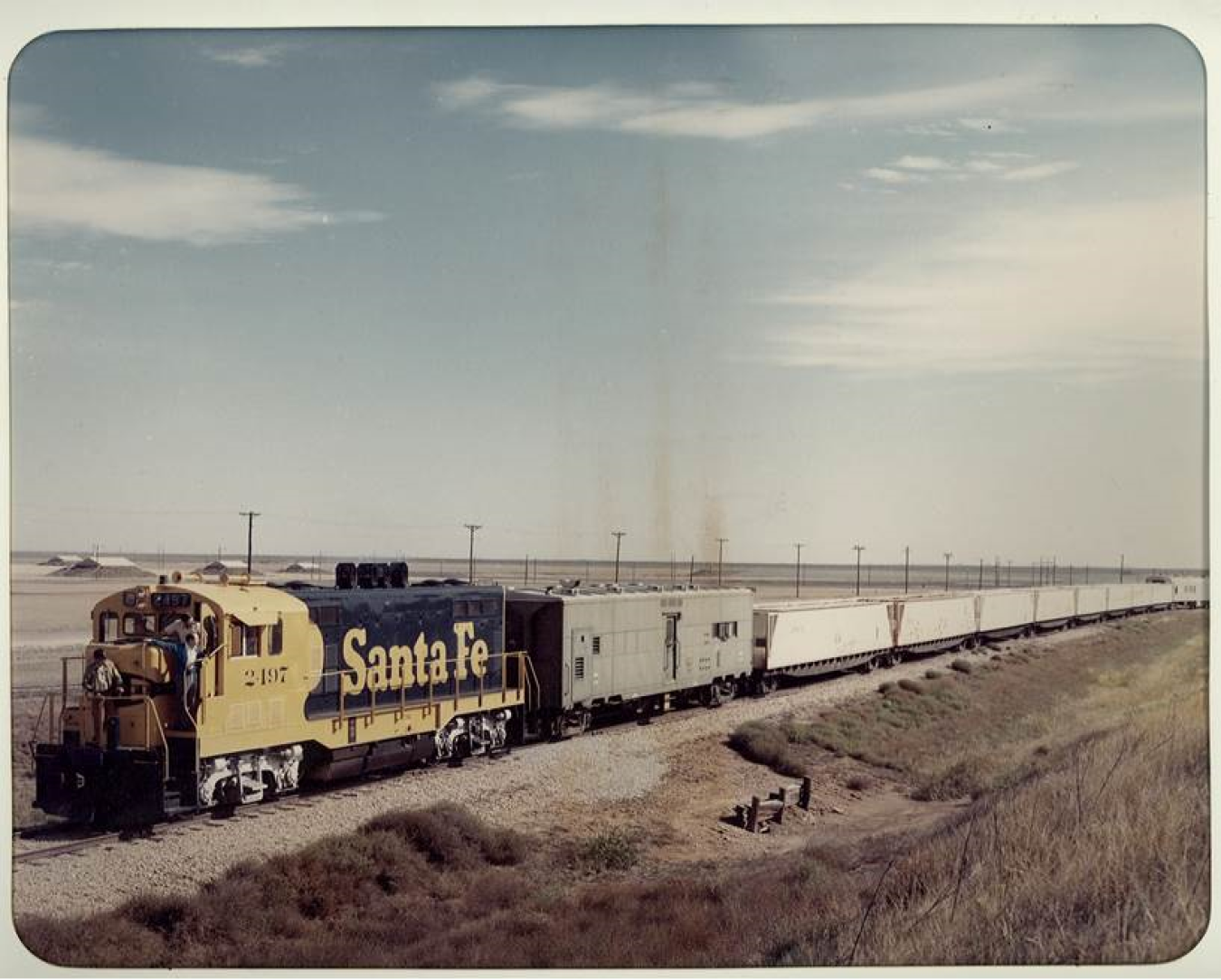A history of the transportation of special nuclear materials on the nation's highways.
National Nuclear Security Administration
July 11, 2018

In preparation for the first detonation of a nuclear weapon in 1945, couriers for the Manhattan Engineering District (MED) drove atomic weapon components – including the plutonium core – in the back seat of a U.S. Army sedan from Los Alamos Scientific Laboratory to the Trinity Site in New Mexico.
The rest of the bomb was trucked to the Trinity Site in a metal container packed inside of a wooden crate and secured in a steel bed covered by a tarpaulin. All of the shipments were escorted by technical couriers, special agents and armed military police.
Nuclear materials transportation has evolved since then. The birth of the bomb demanded an ongoing effort to provide specialized protection of weapons and components on the nation’s highways.
Over time, responsibility for nuclear materials and weapons shifted from MED to the Atomic Energy Commission, to the Energy Research and Development Administration, and finally to the Department of Energy’s (DOE) National Nuclear Security Administration (NNSA). Today, the transportation of these national security assets falls under NNSA’s Office of Secure Transportation (OST).
In the decades that followed the Manhattan Project, sedans and open steel bed trucks gave way to train cars, aircraft and technologically advanced tractor-trailers.
The era of significant rail transport of weapons, which occurred from roughly 1975 to 1992, was perhaps the most publicly visible period for OST. There were numerous anti-nuclear protests associated with rail transportation during that time.

The “White Train” consisted of secure railcars, buffer cars, and courier escort coaches that were painted white to provide thermal protection for the heat-sensitive weapons they contained. The white paint also made the railcars easier to identify than unmarked tractor-trailers on highways. In the mid-1980s, the sides of the railcars were repainted with more traditional train colors, but the tops remained white.
DOE and its predecessor agencies also utilized aircraft throughout the history of weapons movement. The current OST fleet consists of two Boeing 737-400 passenger/cargo aircraft and a DC-9 Combi, all housed at Kirtland Air Force Base in Albuquerque. The aircraft move national security cargoes to NNSA customers, transport federal agents, and support DOE emergency response capabilities.
The Safe Secure Transport (SST), designed at Sandia National Laboratories in the early 1970s, was the first trailer designed specifically to provide cargo safety and to prevent any potential unauthorized entry and access to national security assets.
In the 1990s, the SST was replaced by the Safeguards Transporter, which further enhanced security systems and improved safety and ride comfort to the tractor-trailer system. Sandia is currently developing the Mobile Guardian Transporter, a third-generation secure system for over-the-road transport of weapons and special nuclear materials within the United States.
Today, the technology continues to change, but the transportation of nuclear materials still involves highly trained couriers, now called federal agents, whose job is to protect the movement of these weapons. As OST prepares for future challenges, the organization is renewing its commitment to protecting America’s national security assets through safe and secure shipments guarded by an elite cadre of federal agents, according to Vincent Fisher, OST's assistant deputy administrator.
Threats change, technologies evolve, budgets fluctuate and responsibilities inevitably increase. But the ongoing execution of our mission rests with smart, highly-trained and patriotic people who manage what we do, who plan for every contingency, and who support the steadfast agents who carry out our mission year after year on the nation’s highways.
“Our job is so important to the nation’s well-being that we can’t rest on past successes and accomplishments,” said Fisher. “Threats change, technologies evolve, budgets fluctuate and responsibilities inevitably increase. But the ongoing execution of our mission rests with smart, highly-trained and patriotic people who manage what we do, who plan for every contingency, and who support the steadfast agents who carry out our mission year after year on the nation’s highways. We rededicate ourselves to that effort every day.”
For more than 40 years – even after driving the equivalent of a trip to Mars and back – OST drivers have had no fatal accidents or release of radioactive material.
Now weapons are generally moved in convoys of 18-wheel rigs with sophisticated trailers to protect the public, accompanied by specialized escort vehicles. OST’s agents have a critical national security mission that requires them to maintain a low public profile while traveling millions of miles on public highways.
OST engages in constant planning, communication and coordination on the road. This occurs between its three command centers: Albuquerque, New Mexico, Amarillo, Texas, and Oak Ridge, Tennessee. The secure communications center in Albuquerque has served as OST headquarters since 1975. It monitors the status and location of convoys and maintains real-time communications 24-hours a day, 365 days a year.
A current OST Replacement Armored Tractor and Safeguards Transporter.

